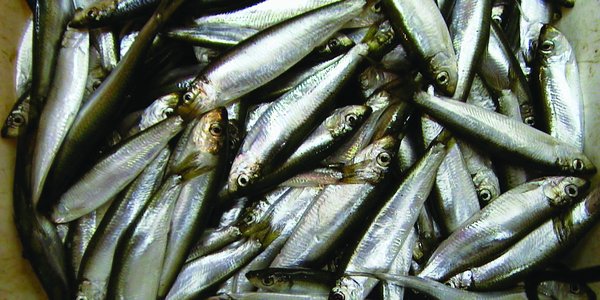Topic: Sprat

Sprat are schooling fish that live in pelagic waters.
Photo: Institute of Marine Research
Sprat (Sprattus sprattus).
Photo: Erling Svensen / IMRPublished: 18.12.2018 Updated: 14.06.2022
Sprat older than 4–5 years are rarely observed in Norwegian waters; age 0 and 1 individuals are more common. Since the commercial fishery targets young fish, it is heavily influenced by annual variations in year-class strength. With good growth the young of the year can reach a size of 9.5 to 10 cm by autumn, and be recruited to the fishery by the 4th quarter.
Individuals become sexually mature between 1–2 years of age, depending on the growth rate during the first year. Spawning occurs in the fjords; it is believed however that most production comes from recruitment outside the fjords. Little is known about recruitment and migration of the stock. There are good indications, however, that sprat occurring in the fjords during autumn and winter form the basis for the next year's fishery.


